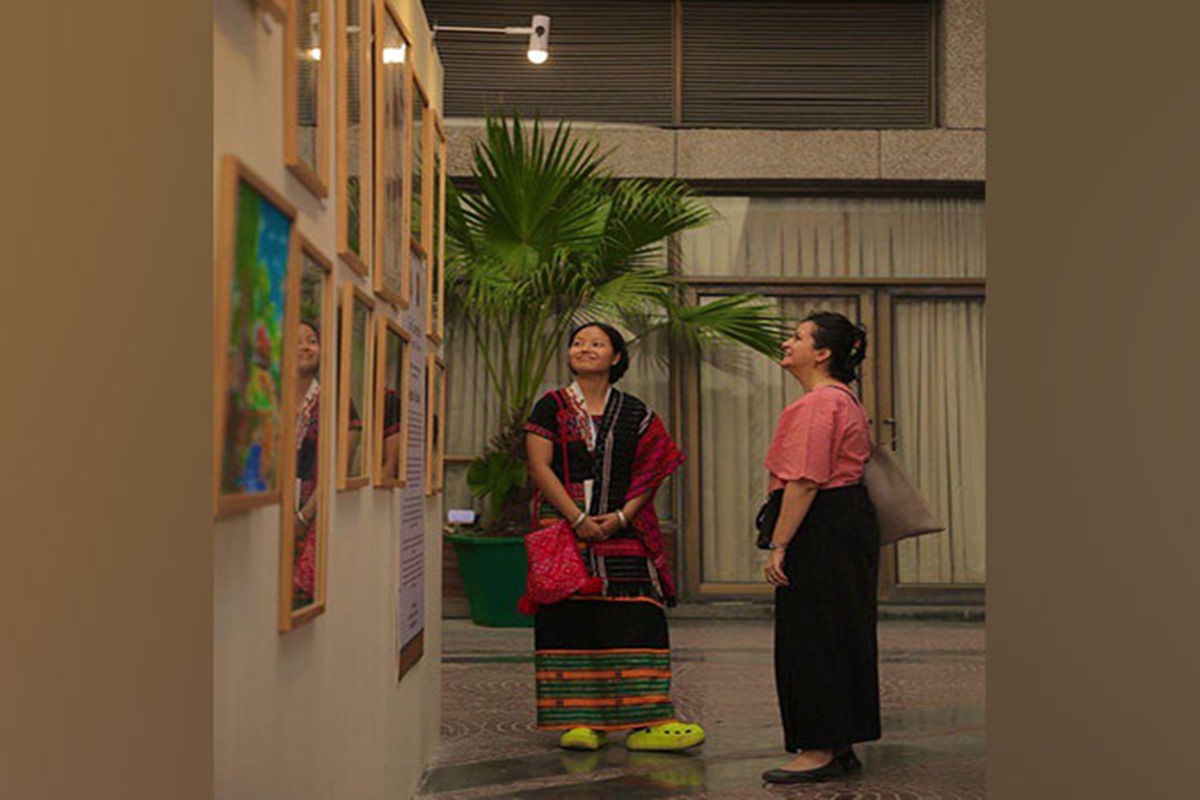President Droupadi Murmu inaugurated the art exhibition, “Silent Conversation: From Margins to the Centre,” on Friday. The two-day exhibition showcased the transformative power of art in amplifying the voices of tribal artists from India’s tiger reserves.
This marks the commencement of a series of exhibitions planned in various Indian cities and around the world.
The primary goal is to establish a sustainable market for these artworks, offering an alternative livelihood to marginalized communities and bringing their unique talents into the national spotlight. The event was jointly organized by the Sankala Foundation in collaboration with the National Tiger Conservation Authority (NTCA).
The Sankala Foundation, a Delhi-based policy and research organization dedicated to climate change, forest and wildlife conservation, and the betterment of vulnerable communities, spearheaded this initiative.
Deep within India’s forests, a silent but profound conversation unfolds. This exchange carries a weighty significance that transcends time itself. It serves as a bridge between tribal communities and the wilderness, a whisper that has endured for centuries, expressed through the primitive medium of stone art to the modern canvas.
For generations, India’s tribal communities have harmoniously coexisted with nature and its inhabitants. This coexistence is notably expressed through their artistic creations and paintings.
This exhibition aimed to liberate these artworks and paintings from the confines of the forested areas, shining a national spotlight on them.
The exhibition strives to help tribal communities receive fair compensation for their art, thereby preserving an essential aspect of their heritage and bolstering their income. This, in turn, can evolve into a sustainable alternative means of livelihood.
With the support of the Union Government, various initiatives have been undertaken to safeguard forests, wildlife, water bodies, and the environment, ultimately striving to mitigate the adverse impacts of climate change and secure a future for generations to come.
The exhibition spotlighted the intricate relationship between tribal communities living near India’s tiger reserves and their deep-rooted connection with the forest and wildlife, all conveyed through their artwork.
These creations are more than mere paintings; they are reflections of age-old bonds and showcase unique art styles such as Gond, Bhil, Patachitra, Khovar, Sohrai, Warli, and many others. Numerous tribal artists were present at the event, providing visitors and art enthusiasts with the opportunity for direct interaction.
While a few renowned names like Jangarh Singh Shyam, Bhuri Bai, Lado Bai, and Manu Chitrakar have gained recognition, the exhibition also aimed to uncover hidden talents among the tribal artists.
During the inauguration ceremony, President Murmu highlighted that today, 70 percent of the world’s tiger population resides in India, and the communities living around Tiger Reserves and National Parks have played a pivotal role in achieving this feat.
She expressed her satisfaction with the exhibition for showcasing the profound relationship between the people living around the Tiger Reserves and the forests and wildlife through art.
President Murmu emphasized the need for a holistic and collective effort in light of the pressing issue of climate change.
“Not only for environmental protection but also for the survival of humanity, we must embrace the life values of the tribal communities. We should learn from them how to lead a prosperous and happy life while living in harmony with nature,” the President remarked.
By offering these artworks for purchase, the exhibition encouraged visitors to support these artists and invest in culturally significant pieces. This is geared towards fostering a greater appreciation and patronage of tribal art.
The event also played a crucial role in raising awareness about tigers, forests, and tribal communities among schoolchildren and the general public. (ANI)











